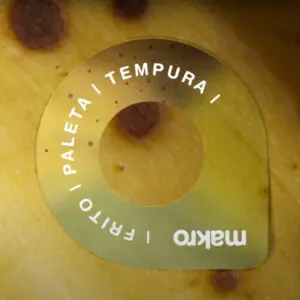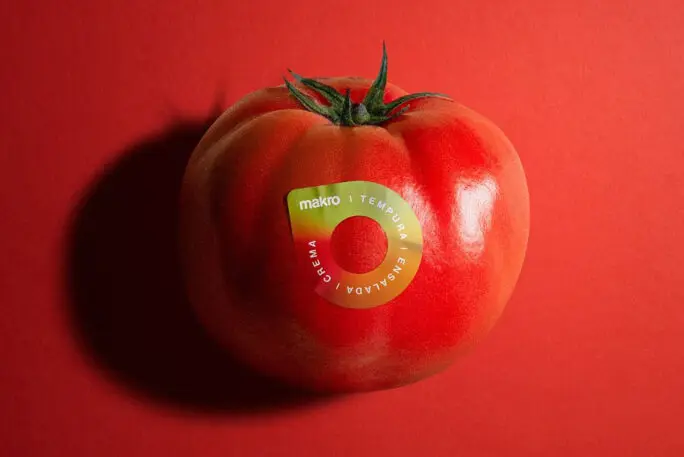I love this sticker that tells you the ideal way to prepare and eat produce based on its ripeness level. No technology. No fancy QR codes. No AI involved. Just clever design that is so *chef kiss* that I wish every supermarket in the world would tag ever piece of produce with it.

The sticker is just one inch in diameter: a color wheel with a hole in the middle. The color gradient is coded to match the ripeness grade of your fruits and vegetables. Along the wheel, text shows you the best way to cook it. The banana smoothly transitions from green (fry it) to yellow (ice cream) to slightly brown (tempura) to brown (cupcake, although I suggest Cheetah’s banana bread instead).
Other produce—like tomato, avocado, papaya, or mango—have other color gradients and suggestions, all according to their natural ripening process. From turning sweet mushy tomatoes into gazpacho to turning red mangoes into hot chili sauce, there’s always a way to eat that fruit or vegetable you thought was not in its prime or past its best-consumed-by time.
The objective of the sticker—created by ad agency Grey for the Colombian branch of cash & carry chain Makro (which is like Costco but Dutch)—is to remind people that they don’t need to throw stuff away. Thanks to this sticker, the next time you look at that really dark avocado and think you have to trash it, there’s a yummy way to put it into your belly and not waste it.

The sad fact is that, as much as we like to whine on Twitter about others’ CO2 footprint, most of us throw perfectly fine food away as if it’s no big deal. But it is a big deal. Check it out: In Colombia alone they waste about 6.1 million tons of food every year. In the United States, we trash about 59.5 million tons. That means that almost 40% of all food produced in this country goes right into the trash, and nearly 40% of that is fruits and vegetables.

Even sadder: The numbers around the “developed” world are all similar, according to the global stats by the United Nations’ Food and Agriculture Organization. Now consider the water—between 25 to 30% of all water used in farming gets effectively wasted—energy, plastic, paper, and fuel that was used in growing, packaging, and distributing all that perfectly fine foodstuff.
It’s no wonder that the campaign is called “El Sticker Salva-Vidas” (Spanish for “the lifesaver sticker”) and it just got a couple of Lions at the Cannes Lions International Festival of Creativity 2023. Unfortunately, while clever and fun, the initiative is limited to the Makro center in Cumará, in the city of Bogotá. Maybe we can all just print the images in this post and put them on our fridge’s door. Next time we are about to toss that not-so-pretty avocado in the bin, we can look at it, think about all that waste, and do something about it.
Recognize your brand’s excellence by applying to this year’s Brands That Matter Awards before the final deadline, June 7.
Sign up for Brands That Matter notifications here.